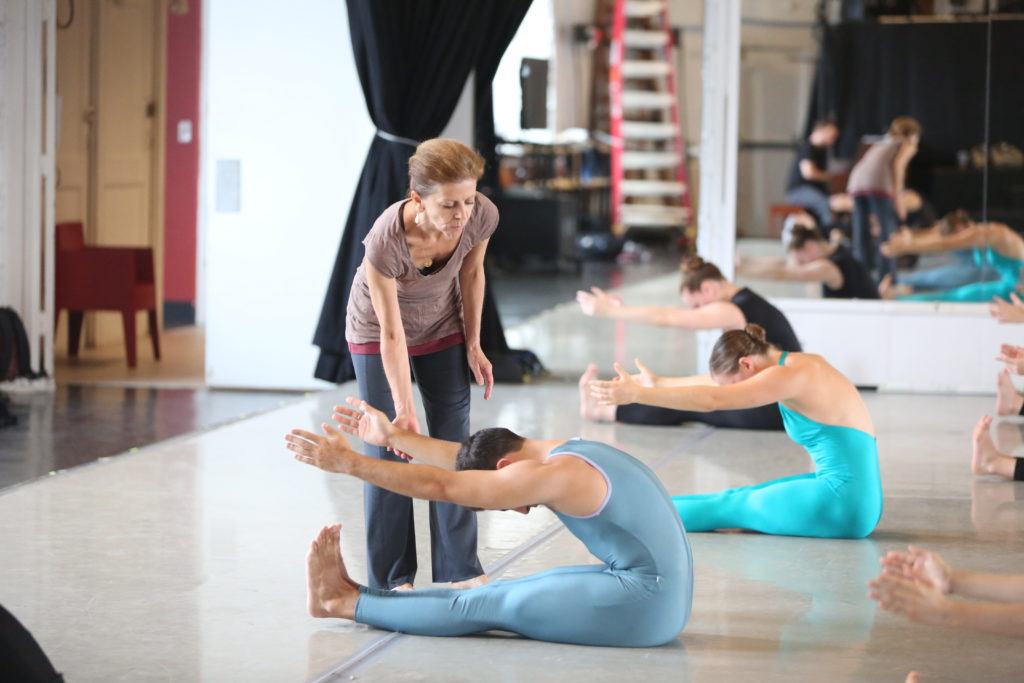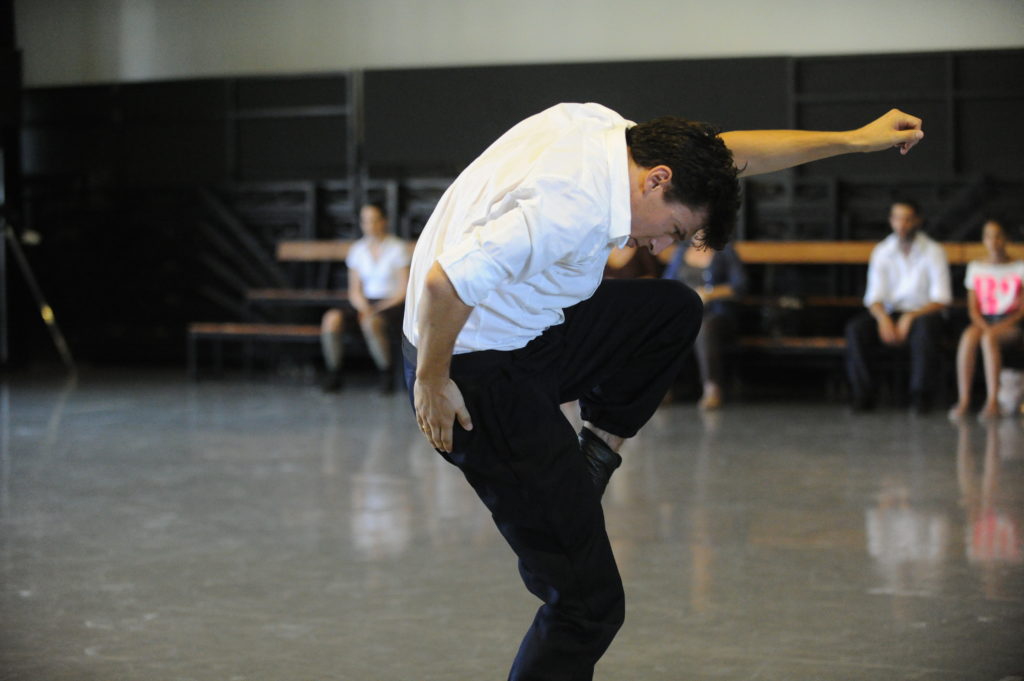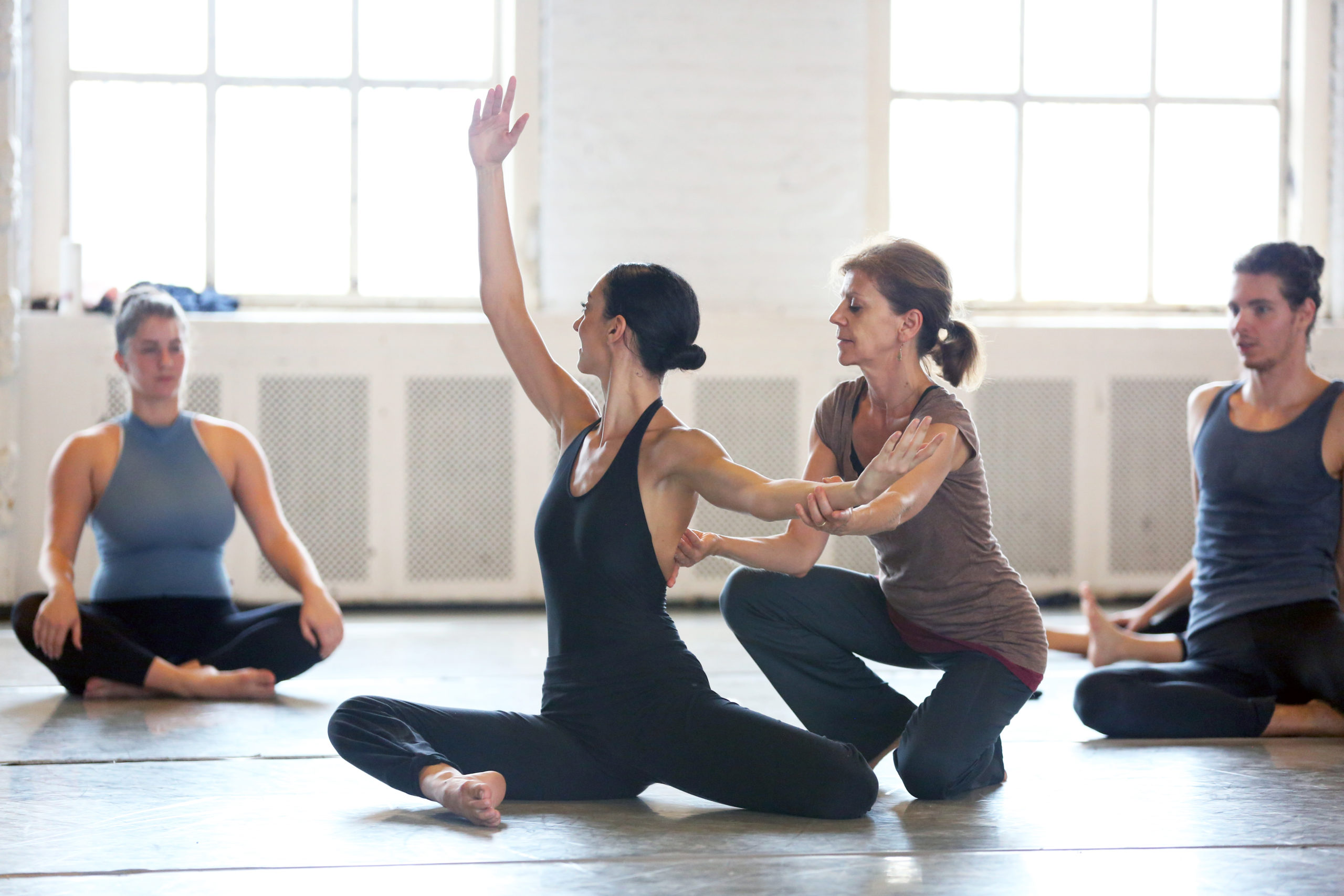Tips for a More Articulate, Expressive Back
A tree of life. A string of pearls. A slithering snake. Dancers conceive of the spine and its delicate complexity in myriad ways, and making sense of the 33 interconnected vertebrae from which nearly all movement grows can be as challenging as it is essential.
That’s because the spine doesn’t just direct movement in the body—it has its own expressive power, says Graham 2 director Virginie Mécène: Think of the Graham contraction, or the evocative power of an undulating back. But the architecture of the spine makes it a difficult area to access mobility in for many dancers, and saying something with that mobility—having a truly articulate spine—is an even steeper task. Use these tips to unlock your spine for both movement and expression.
Use the Breath
Breathing is key to releasing the spine, says Michelle Rodriguez, a physical therapist who works with dancers at her Manhattan Physio Group. But she says many dancers don’t realize that they’re holding their breath or not breathing deeply, which in turn can make their thoracic spine stiff. One trick Rodriguez likes to use to remind dancers to breathe: Have them talk as they move, since inhales and exhales will naturally flow as they speak.

Mécène recommends a simple Graham exercise called the “Breathings” to build the connection between the breath and the spine: Sitting with your legs crossed and hands to each side, exhale as you curve the spine, then inhale as you re-straighten. Keep the spine as long as possible throughout the exercise. “It’s an abstraction of the breath, but an exaggeration,” she says.
Zoom In, Zoom Out
Mécène encourages her students to visualize the small, interior muscles that line the spine, rather than the larger, superficial muscles of the back. After all, says Bret Easterling, a former Batsheva dancer who teaches contemporary and Gaga at the USC Glorya Kaufman School of Dance, articulation doesn’t have to be about how large your range of movement is, but rather the availability of movement. Easterling has students get more specific in their articulations by focusing on micromovements. One image that helps: imagining you have twice or three times as many vertebrae as you actually do.
In addition to “zooming in,” Easterling likes to “zoom out”: He asks students to imagine that the head is their top vertebra, and their pelvis their last vertebra. “Find gentle movements between those two places at the same time, allowing the spine to fall into place, as if your tail and head are talking to each other,” he says. “Then there’s information that’s traveling through your spine, and that’s what we want.”
Stay Soft
Before Easterling was introduced to Gaga, he held his tension in his back and had frequent back spasms. It was former Batsheva director and Gaga creator Ohad Naharin’s concept of a “soft spine” that helped Easterling find more mobility and ease in his back.
Easterling emphasizes softness so strongly, partially because he often finds that dancers with tight backs go in the opposite direction when searching for mobility in their spines, and try to muscle through it. “I am interested in how doing less can open up room for more,” he says. Mécène agrees, and says that trying to force an expressive spine with the larger muscles of the back tends to backfire.

To help dancers find that softness, Easterling encourages them to scan their back for areas that feel locked, and to focus on bringing sensation there—using imagery like running water or the idea of melting—whether through movement or touch. He also reminds students to give attention to any tension they’re holding in their hips, jaw, chest and rib cage, as these areas can impact how much movement is available in the spine. He’ll ask them to imagine that their chest is made of soggy cardboard, for instance, or that their rib cage consists of many different parts that can move independently instead of as one large chunk.
Though not all forms emphasize an elastic, hypermobile movement quality like Gaga does, Easterling says that the concept of a soft spine can translate to any style, even those that usually call for a very directed spine, such as ballet. “How can I stand at the barre in ballet where I need to have this directed spine, and continue to invest in softness without it being attached to an aesthetic?” he says. “Same inside of hip hop, with this idea of bounce. How can softness enable more echo for bounce to be present? Softness of the spine doesn’t have to be a movement. It’s a sensation.”




